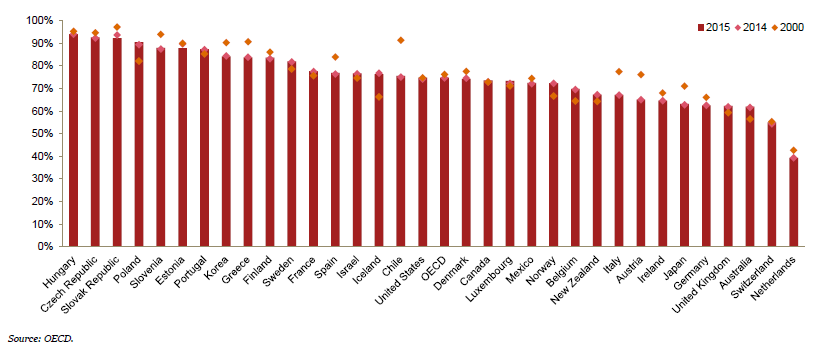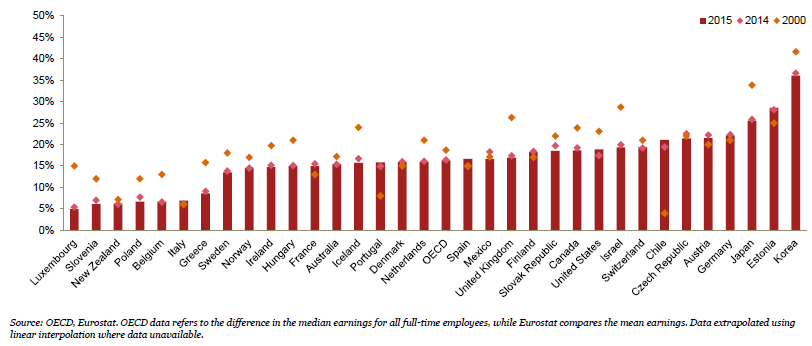
Full-time female employment is highest in eastern European countries, according to an annual report published today by the consultancy firm PwC.
Ninety-four percent of women in Hungary were in full-time employment in 2015, 93 percent in the Czech Republic and 90 percent in Poland the Women in Work Index found.
Poland has seen the most significant reduction in female unemployment, which dropped from 18 percent in 2000 to eight percent in 2015.
Female full-time employment rate, 2000 — 2015
The UK, on the other hand, is on the backfoot when it comes to the number of women in full-time employment, ranking 30th out of 33 OECD countries.
How well do you really know your competitors?
Access the most comprehensive Company Profiles on the market, powered by GlobalData. Save hours of research. Gain competitive edge.

Thank you!
Your download email will arrive shortly
Not ready to buy yet? Download a free sample
We are confident about the unique quality of our Company Profiles. However, we want you to make the most beneficial decision for your business, so we offer a free sample that you can download by submitting the below form
By GlobalDataJust 62 percent of British women were in full-time employment in 2015, showing no improvement on the previous year.
Nordic countries, like eastern European countries, performed well in terms of getting more women onto the job ladder; 82 percent of women in Sweden were in full-time employment in 2015.
Increasing the number of women in work, both part-time and full-time, to match Sweden’s could increase GDP across the OECD by nearly $6trn, an increase of 12 percent.
However, there is still a way to go to reach this goal in terms of employment, as well as ensuring equal pay across all professions.
Female unemployment in Greece saw a significant increase from 17 percent to 29 percent between 2000 and 2015.
Slow progress in Germany, Korea and Spain means that is unlikely that the gender pay gap will close for over two centuries in those countries if historic trends continue.
The enduring pay gap
Although the gender pay gap in the UK is narrowing, men still earn 34 percent more than women in the financial sector.
Gender pay gap, 2000 — 2015
Women are still more likely to work in sectors and occupations that are relatively lower paid given the skills they require.
Public administration and support services have the lowest pay gap at 15 percent and 13 percent in the UK, respectively.
“While it’s encouraging that the UK is making progress on closing the gender pay gap, it is depressing that it will still take around a generation to close it completely,” said Laura Hinton, executive board member and head of people at PwC.
“Pay reporting requirements should help speed up change as businesses will face greater accountability. But merely reporting numbers without any concrete action, won’t change anything.”
From April, gender pay reporting legislation in the UK will require companies with 250 or more employees to publish how large the pay gap is between their male and female workers.
“The Women in Work Index reveals a UK economy held back and under-performing as a result of the gender pay gap. Despite improvements in the UK position we still lag behind many of our European and Scandinavian neighbours,” Sam Smethers chairman of the Fawcett Society, the UK’s largest charity campaigning for women’s rights told Verdict.
“We need to speed up the pace of change by making flexible working the norm, supporting fathers to care for children, encouraging girls and young women in to non-traditional roles and tackling discrimination at work,” she added.









